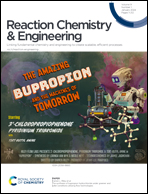Catalytic Mannich reaction of acrylic acid polymers and their application in leather retanning
Abstract
Acrylic polymers are widely used in pharmaceutical, leather, textile and other industries, and are prepared via the polyreaction of acrylic monomers, such as acrylic acid, acrylamide and acrylic esters. Acrylic acid and acrylamide have been proven to participate in the Mannich reaction to achieve cationization; however, the Mannich reaction of methyl acrylate has not been reported. At present, the main role of catalysts in the Mannich reaction is to provide products of specific spatial configuration, and there are few studies on improving the degree of cationic modification. The participation of acrylic acid, acrylamide and methyl acrylate in the Mannich reaction by means of the catalyst NaH was studied in this work. The optimal reaction conditions for the homopolymers were obtained via orthogonal experiments. At room temperature, the optimal reaction conditions for polyacrylic acid were as follows: the molar ratio of polyacrylic acid, glutaraldehyde and diethanolamine was 1.0 : 1.4 : 1.0, and the amount of catalyst was 7%. The optimal reaction conditions for polyacrylamide were as follows: the molar ratio of polyacrylamide, glutaraldehyde and diethanolamine was 1.1 : 1.1 : 1.2, and the amount of catalyst was 9%. The optimum reaction conditions for methyl polyacrylate were as follows: the molar ratio of methyl polyacrylate, glutaraldehyde and diethanolamine was 1.1 : 1.2 : 1.0, and the amount of catalyst was 9%. As a result, the maximum degrees of modification of polyacrylic acid, polyacrylamide and methyl polyacrylate were 63.0%, 33.5% and 39.0%, respectively. The range analysis of the orthogonal experiments showed that the effects on the modification degree of vinyl homopolymers, in sequence from strong to weak, were as follows: amount of catalyst > amount of amine > amount of aldehyde. Subsequently, polyacrylate–acrylamide–methyl acrylate (P(AA–AM–MA)) was synthesized using acrylic acid, acrylamide and methyl acrylate as monomers, and then modified via the catalyzed Mannich reaction. A novel amphoteric acrylic acid copolymer retanning agent (HCP(AA–AM–MA)) with a 50.2% degree of modification was obtained, and its properties as a retanning agent in leather-making were investigated. The dye-uptake and K/S value of the dyed leather retanned with HCP(AA–AM–MA) were 91.5% and 18.5, respectively, an increase of 18.4% and 3.4 in comparison with those of dyed leather retanned with P(AA–AM–MA). The results indicated that the dyeing-assistant performance of HCP(AA–AM–MA) was improved. Moreover, the elongation at break and tensile strength of the retanned leather were 82.0% and 31.9 MPa, respectively, which were higher than those of P(AA–AM–MA)-retanned leather (78.9% and 27.4 MPa).



 Please wait while we load your content...
Please wait while we load your content...